Neck Pain Relief Exercise Routine
Body Part:
Neck
Equipment:
Osteopressure Tool, Foam Roller
Level:
Intermediate
Body Part:
Neck
Equipment:
Osteopressure Tool, Foam Roller
Level:
Intermediate
Neck pain is annoying, there’s no doubt about that. But there’s no reason to just accept the discomfort or mask it with painkillers! You can easily do something about the ache by yourself. Using methods from the Liebscher & Bracht pain therapy, the pain will be gone in no time. We’ve prepared an exercise routine that makes use of our three techniques: osteopressure for instant pain relief, foam rolling massages for long-term benefits and stretches to keep your mobility intact. If you do the exercises regularly, you can strengthen your neck and avoid neck aches in the future! Let’s get started.

Sign up for our free newsletter and discover how to manage your pain yourself. Every two weeks, we’ll deliver follow-along videos and articles to your inbox.
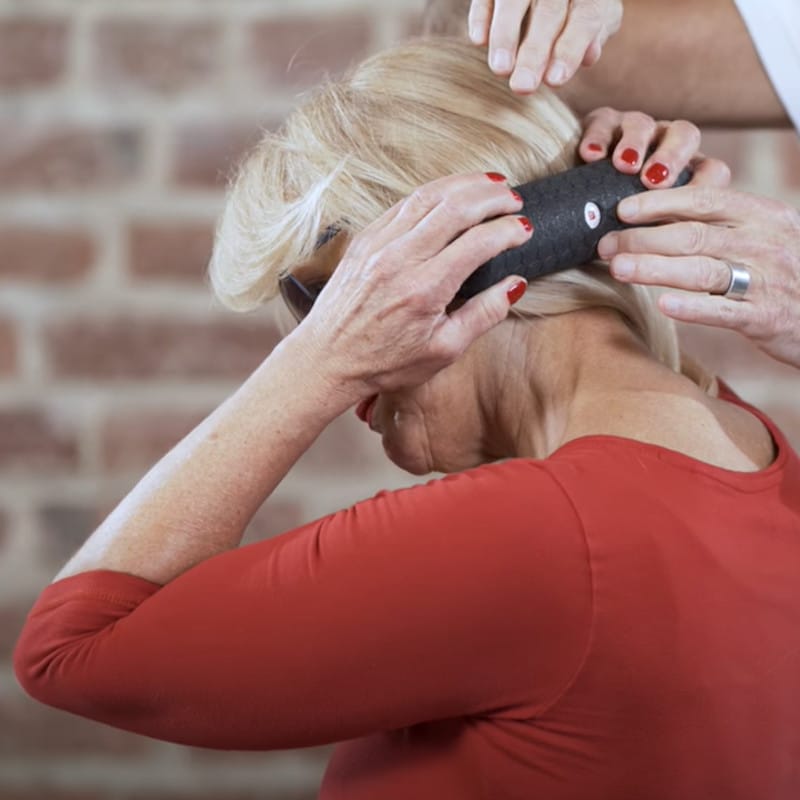
This first exercise for neck pain relief uses our mini foam roller as your massage tool. You will feel most comfortable doing this movement in a kneeling or sitting position.
Start by turning your head 45° to the right, with a side tilt to the front and bottom right. That will expose the neck area you will want to roll, where all your tension is at the moment.
Feel behind your ear for the bone that sticks out. That’s the starting point for your massage. While maintaining a constant strong pressure, roll very slowly all the way down your exposed neck muscle. Keep the roller in contact with your muscles throughout.
As you reach the lower points on your neck, you’ll notice that this area is probably the most sensitive. Keep the pressure tight as you start to follow the muscles out across the top of your shoulder blade. Roll slowly on out until you can get no further.
Now switch to the other side and roll down your neck to your shoulder blade from top to bottom in exactly the same way. It’s OK to repeat this exercise two or three times in a row, but always rolling in the same direction – downwards from the bone just behind your ear.
When rolling down, you should be aware that tiny movements are taking place under your skin. The rolling massage should activate tiny internal receptors – small switching elements that help your body relax and let go, making the area softer and a little easier to roll. You could also try slightly varying the angle at which you hold the foam roller, but just make sure both ends of the roller stay in alignment while you do so.
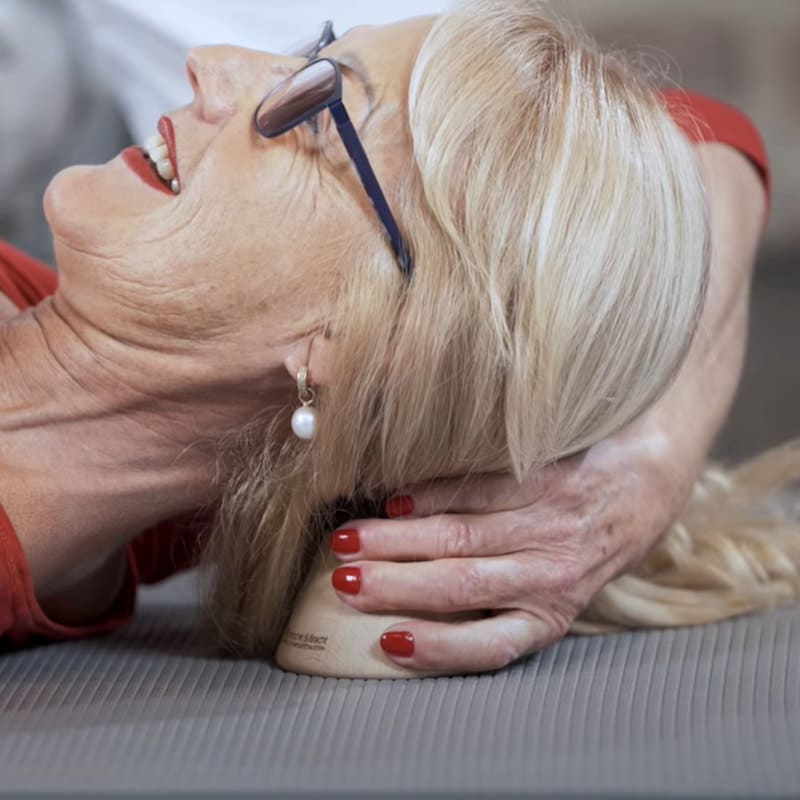
This exercise applies pressure using our set of pain-releasing tools. So take the wooden cone base and attach it to the flat cone tool. You will need to lie flat for this exercise because gravity will supply most of the pressure needed.
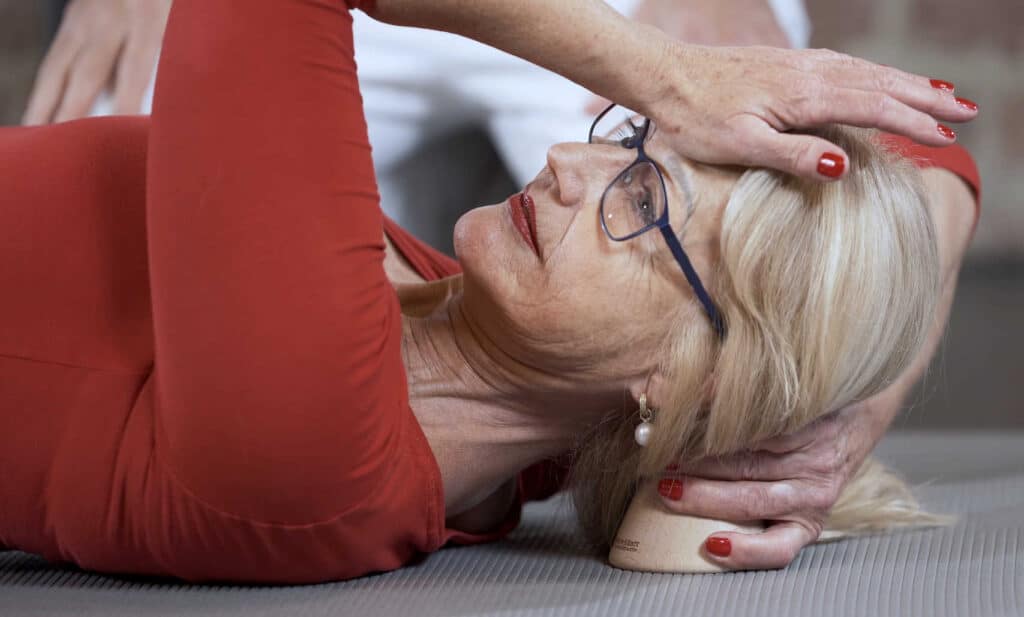
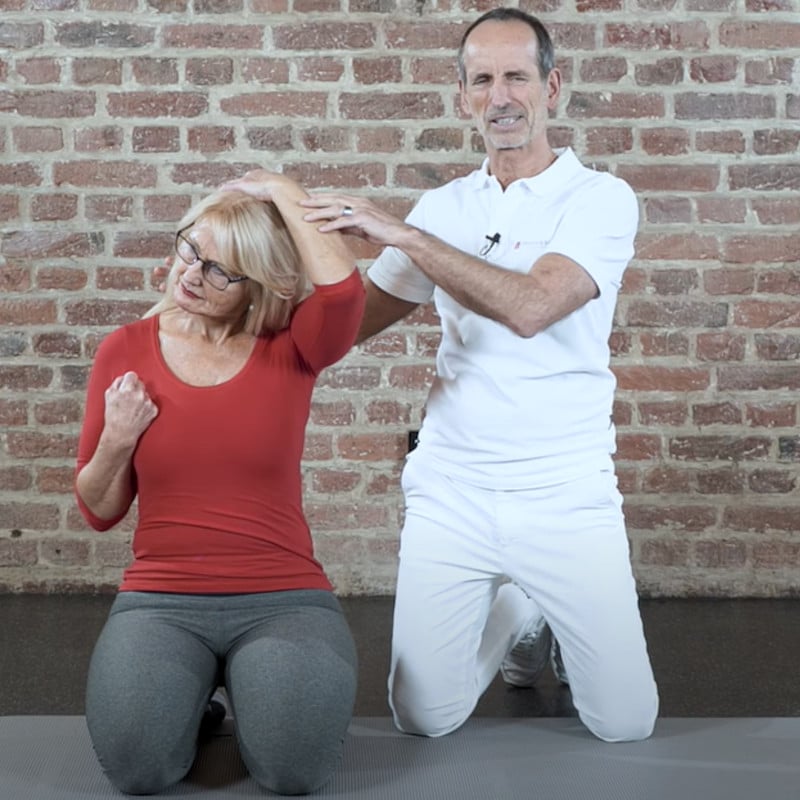
We continue our neck pain relief with some neck exercises you can perform in a comfortable sitting or kneeling position.
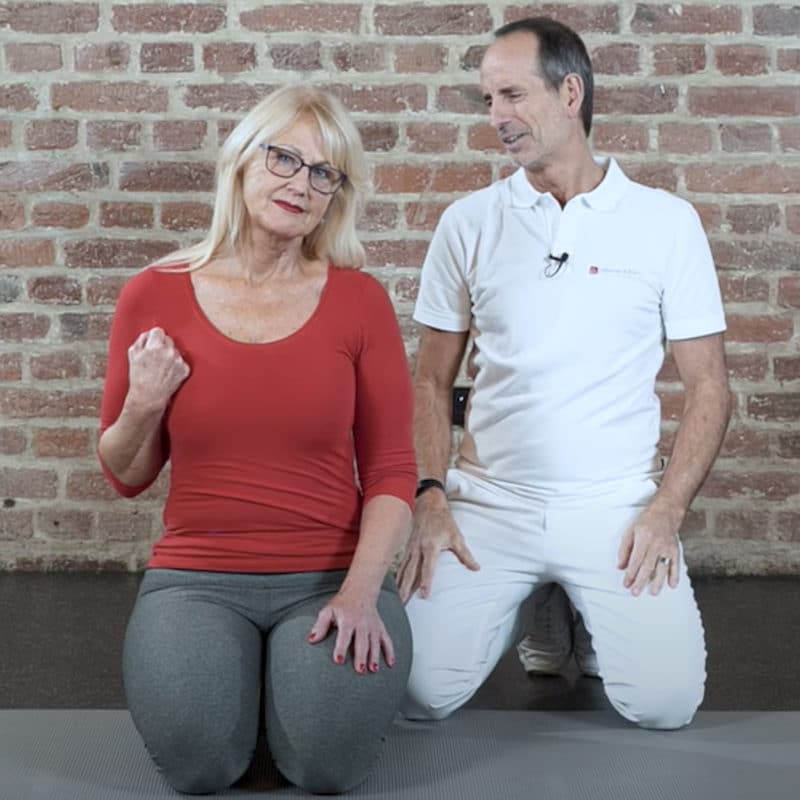
Now let’s try to get some freedom of movement into your neck after all that rolling and stretching.
Once again, sit or kneel down comfortably with a nice straight back ready to move your head forward. But moving forward correctly does not mean bending your head down, but rather moving your head forward. So as you move forward, take your spine with you. And only bow your head at the end of the movement. Thus, your thoracic spine stays straight with just your head going down at the finish.
Moving Your Head in Different Ways

This next neck pain relief exercise helps to remove waste from your cervical spine discs, and allows a supply of fresh nutrients to flow in.
Download our FREE PDF guide and discover more neck pain exercises you can do from home.
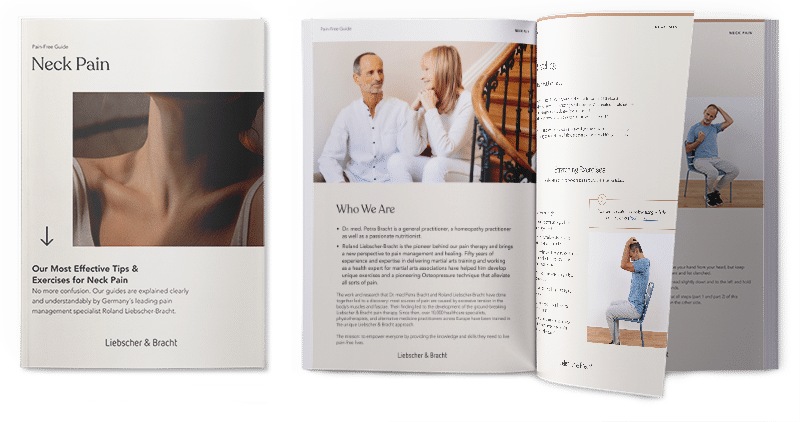
Then we would be happy if you shared it with your friends: